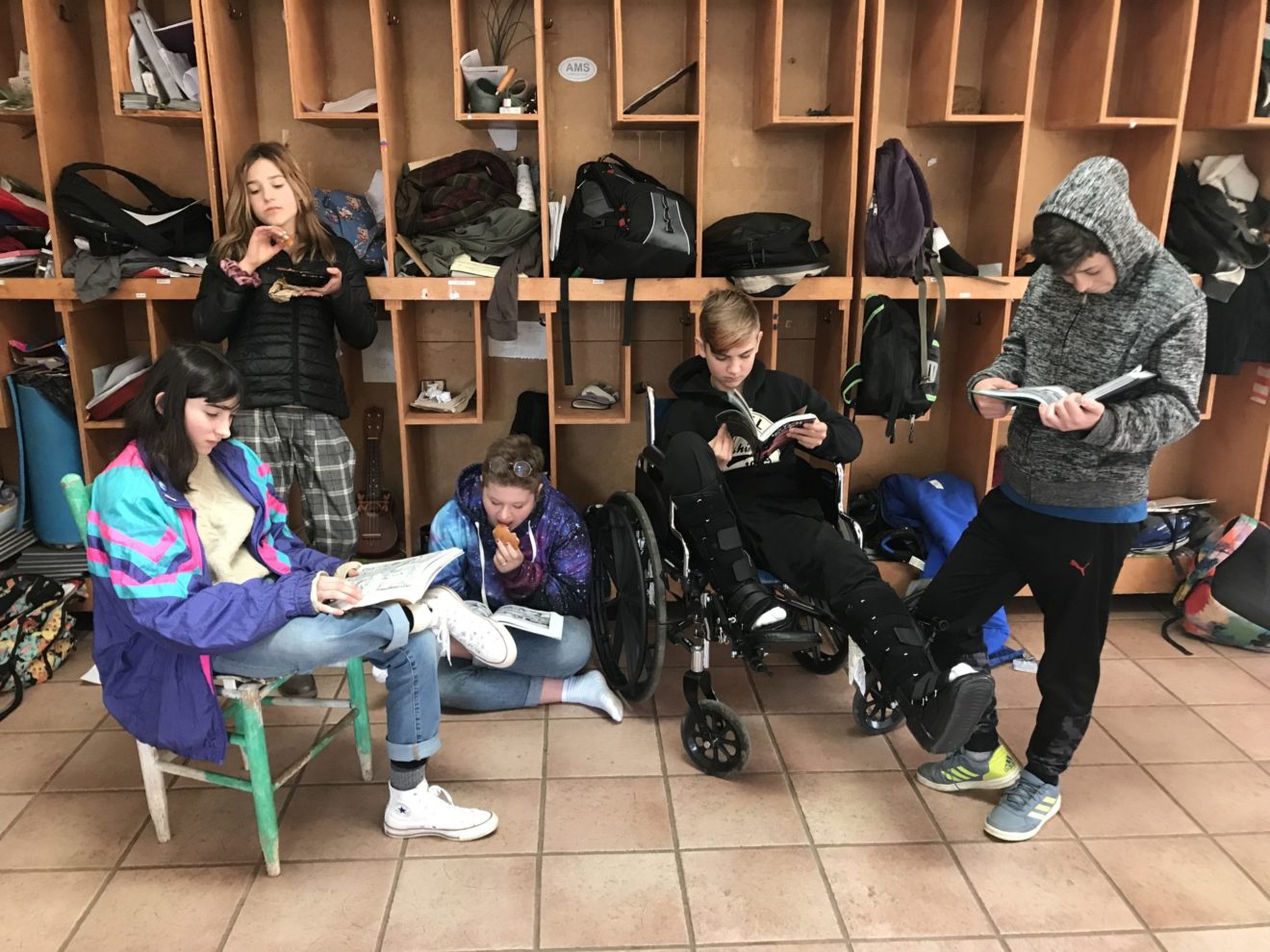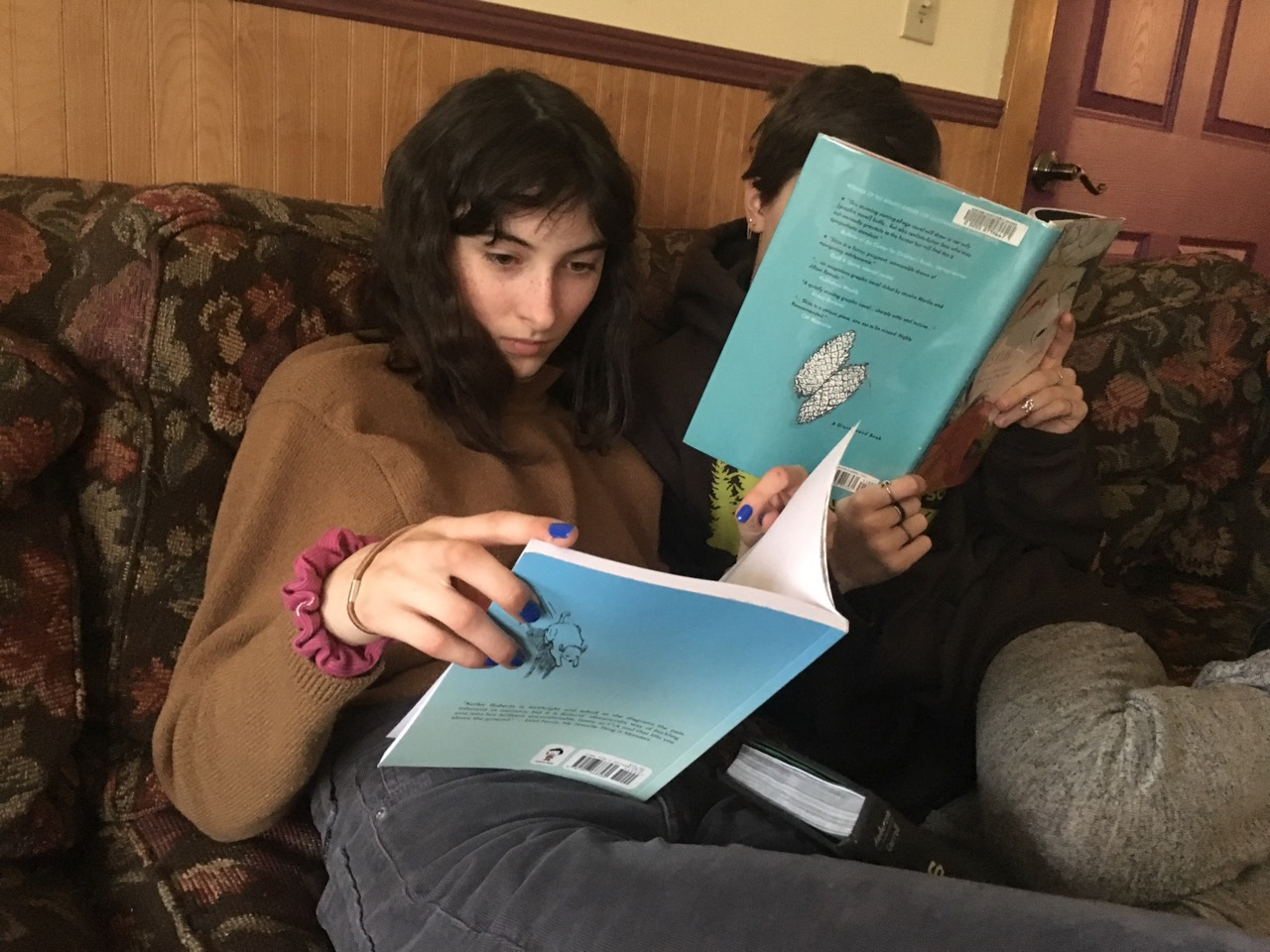“Storytelling Quicksand:” Engaging Students in Graphic Novels and Comics

For young people reading is especially important and powerful. In Family Education’s article The Benefits of Reading as a Teen, reading is shown to have a direct impact on a young person’s success. In addition to boosting vocabulary and clear educational benefits, reading expands horizons. It is particularly crucial for adolescents to see mirrors and windows in stories. In other words, stories shift young people’s worlds through showing them others who share their same experience (mirrors). As well as describing the stories of those who lead lives completely different than theirs (windows). Middle school students are in a distinct developmental position. They are just beginning to look outside of themselves and they need to be able to look to stories. For all these reasons and more, Arthur Morgan School looks to engage students in literature, even when that means changing the kind of books students might be reading.
Centering Student Interests

Students immersed in graphic novels on a meeting room couch.
I had the privilege of teaching a graphic novels course this December unit. The students in the class had been exposed to some comics. But they were hungry for more! While longer books can sometimes feel overwhelming, students felt able to devour these books and kept asking for more!
To start, we covered the history of American comics from early twentieth century up until now. This gave students a foundation for understanding comics they read. It also provided understanding of how the genre evolved and changed. Then we spent a full three days of class reading. Just reading. Students were given over eighty books with which to engage. Additionally, they were required to report back on what they read during that class period. They were asked to supply details such as themes, year published, and general curiosities. This accountability during our “free read” classes allowed students to see value in the simple act of reading.
Expanding What it Means to Read

A ninth grader is shocked by how much they’re enjoying this book!
There were core texts we all read to facilitate class discussions. These included Marjane Satrapi’s Persepolis, Emily Carroll’s Through The Woods, Eleanor Davis’ How to be Happy and Micheal Deforge’s Angelica Sticks: Folk Hero. Additionally, we all read As The Crow Flies in order to be able to Skype with the author, Melanie Gillman. This range of books gave students thirty years of comics to reckon with, as well as a wide range of cultural experiences and contexts. Furthermore, reaching out to authors gave students the agency to ask questions. They were able to directly communicate with the very people who wrote these books. This made the texts all that more real. Eighth grader Ashton described the experience with “it expanded my idea of what it means to read and what it means to ask questions.”
Yes, it’s “Real” Reading
One could argue that the more pictures in a book, the less challenging it is to read. However, as Brightly shares in a recent article “graphic novels are storytelling quicksand” for reluctant readers. Where some students may shy away from traditional books, they are often absorbed by graphic novels. This other form of literature can be especially helpful for dyslexic students or students who feel encumbered by their reading pace. It builds their confidence as readers and as young people. Making stories more accessible for teens is another way of making the world more accessible. Or, as a ninth grader described it, reading graphic novels “made the stories so real. It made me feel like I could make comics too.”
-Annie Livingston
